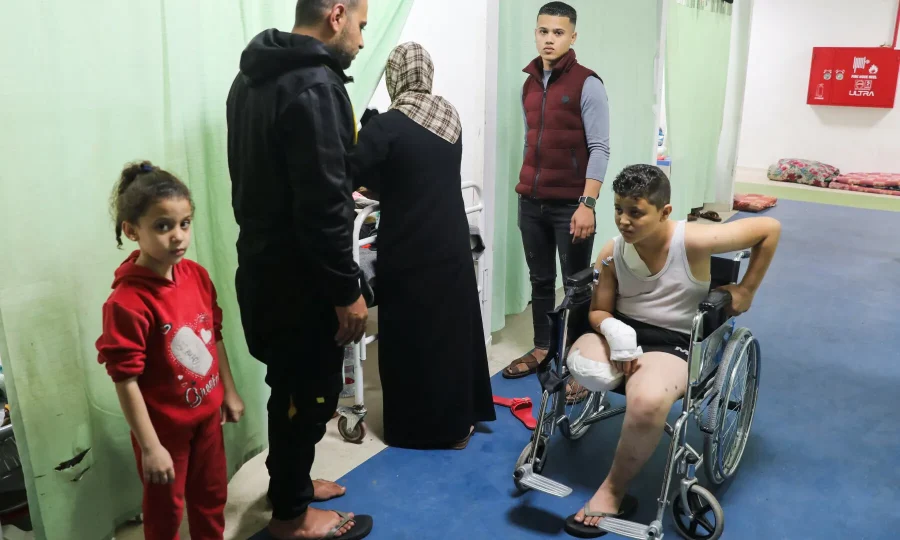Eleven-year-old Noor’s left leg was almost entirely torn off when her home in Jabalia was hit by an explosion in October. Now her right leg, fitted with a heavy metal bar and four screws drilled into the bone, may have to be amputated.
“It hurts me a lot … I’m afraid that they’ll have to cut off my other leg,” she said from her hospital bed, staring at her clunky fixation device.
“I used to run and play, I was so happy with my life, but now when I lost my leg, my life became ugly and I got sad. I hope I can get an artificial limb.”
In bombed-out Gaza, a generation of child amputees is emerging as Israel’s blitz has led to blast and crush injuries as explosive weapons tear through densely-packed high-rise housing blocks.
Doctors and aid workers say Gaza’s collapsed medical system is ill-placed to give children the intricate follow-up care they need to salvage their still-growing, truncated bones.
Only 30 per cent of pre-conflict medics are working due to killings, detentions and displace-ments, according to the World Health Organisation.
More than 1,000 children had undergone leg amputations, sometimes more than once or on both legs, by end-November, according to UN children’s agency UNICEF. Health authorities say nearly a quarter of injuries in Gaza are children.
Poor hygiene and medicine shortages spell more complications and amputations on existing injuries, some of which may not be survivable, doctors say.
“Many limbs that apparently had been saved, will go on to require amputation. And many (people with) amputations and limbs that we think have been saved may still go on to die of the longer-term consequences,” said Dr Chris Hook, a British emergency medicine doctor with medical charity MSF.
Staff at the European Hospital in Gaza, where Noor is being treated, cannot provide the new limb she dreams of.
Even painkillers to help amputees with chronic pain are running low, staff say. Flies were buzzing around the ward when a journalist visited.
“I try as much as I can to make things easier for them as a nurse, but no matter what you do, they have severe psychological problems, they feel incomplete with lots of pain,” said nurse Wafa Hamdan.
The enclave’s main prosthetic limb centre, the Qatari-funded Hamad hospital in Gaza City, was shuttered weeks ago after being hit by Israel.
Israel’s military spokesperson’s unit did not immediately respond to a request for comment on Hamad hospital.
Children with war-related amputations will need up to a dozen surgeries on the limb by the time they reach adulthood because the bone keeps growing, experts say.
But even before the conflict there was a short-age of vascular and plastic surgeons, medics say, and Palestinian health authorities say over 300 healthcare workers have been killed since.
Still, Noor, whose right leg may survive intact, is luckier than some children whose limbs were amputated swiftly due to a lack of time or medical expertise, sometimes without anaesthetics.
“Unfortunately many of them are really unnecessary,” said Sean Casey, a WHO coordinator. At other times, amputation is the only choice because wounded children arrive in hospital days after the injury.
Unicef spokesperson James Elder said he saw a child whose injured left leg had begun to decompose because he had been stuck on a bus for more than three days due to military checkpoint delays.
While Gaza health authorities do not have an official tally, doctors and aid workers say Unicef’s 1,000 figure is accurate for the first two months, but has likely been far surpassed since, making the Gaza amputation rates unusually high compared to other conflicts and disasters.
In Ukraine, where missiles have also struck residential towers during Russia’s invasion, there are 30 known cases of child amputees.—Agencies










